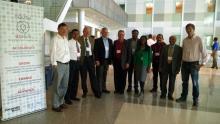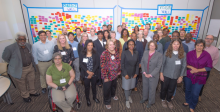
SOUTHERN REGION & COMMUNITY OVERVIEW
The South Hub pursues community input to create positive impacts on people and their communities. The solicitation of community input has led to the development of inclusive programming, expansion of data science education, and society-improving projects.
IMPACT
- 150 virtual and in-person events that have attracted over 5,400 participants
- 200+ All hands Meeting attendees
- 6 South Hub supported multidisciplinary Spoke projects
- 6 seed grants provided by the S.E.E.D.S Program totally $250,000
- Over $6 Million in multidisciplinary Spoke projects








